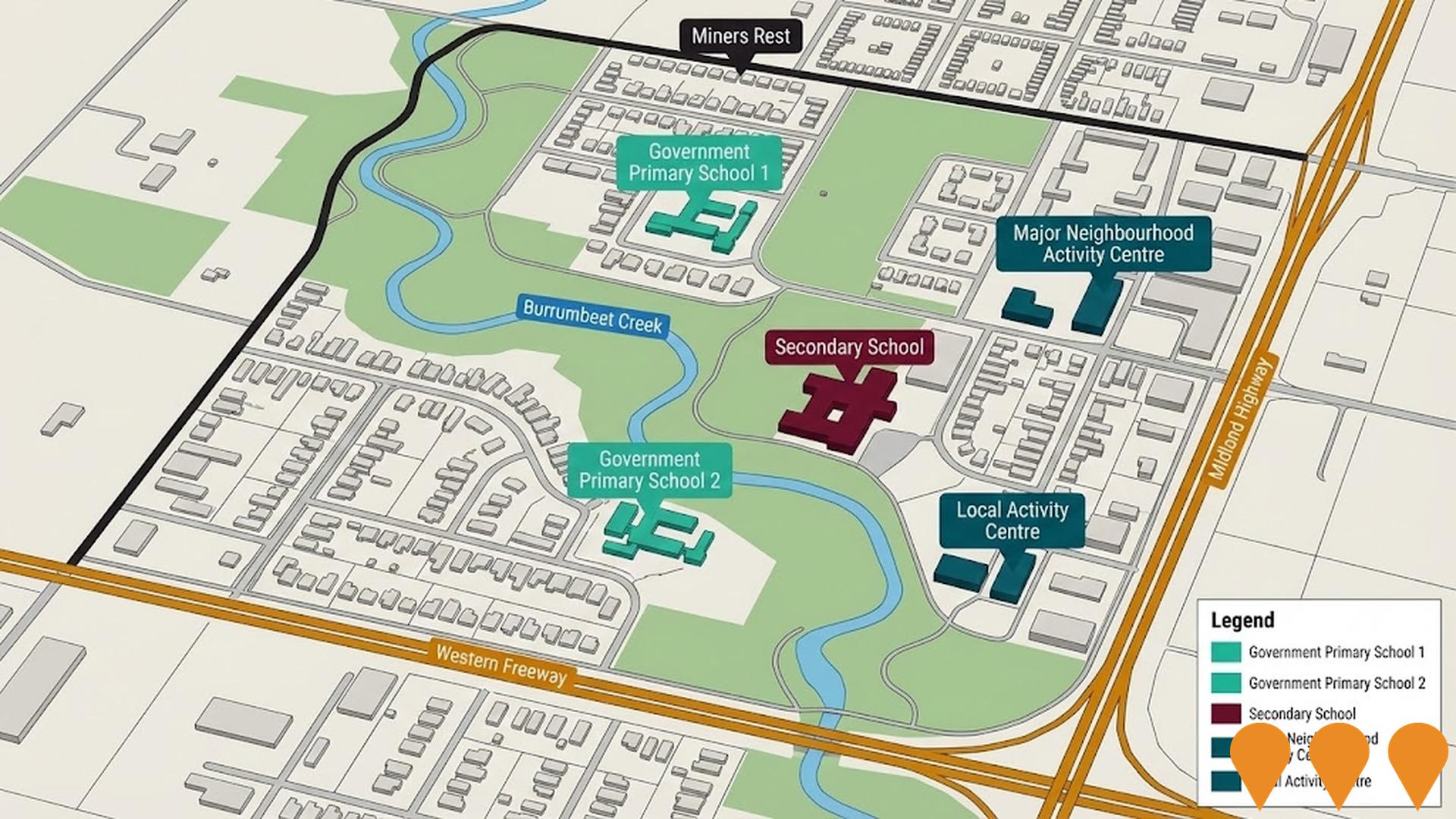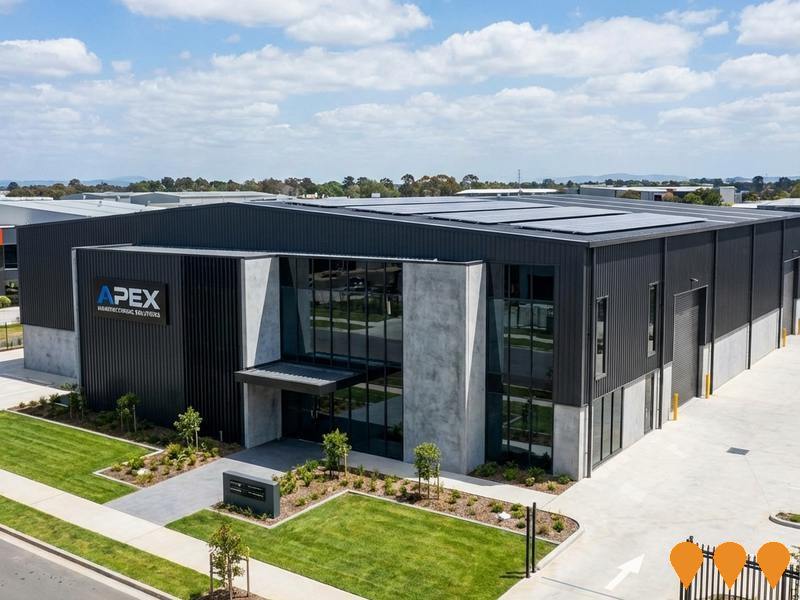Chart Color Schemes
est. as @ -- *
ABS ERP | -- people | --
2021 Census | -- people
Sales Activity
Curious about local property values? Filter the chart to assess the volume and appreciation (including resales) trends and regional comparisons, or scroll to the map below view this information at an individual property level.
Find a Recent Sale
Sales Detail
Population
An assessment of population growth drivers in Creswick - Clunes reveals an overall ranking slightly below national averages considering recent, and medium term trends
Creswick-Clunes' population, as of November 2025, is approximately 8,102, indicating an increase of 17 people (0.2%) since the 2021 Census which recorded a population of 8,085. This change is inferred from ABS's estimated resident population of 7,999 in June 2024 and an additional 86 validated new addresses since the Census date. The population density ratio is 9.5 persons per square kilometer. Overseas migration was the primary driver of population growth during recent periods. AreaSearch uses ABS/Geoscience Australia projections for each SA2 area, released in 2024 with a base year of 2022.
For areas not covered by this data, AreaSearch utilises VIC State Government's Regional/LGA projections from 2023, adjusting using weighted aggregation of population growth from LGA to SA2 levels. Growth rates by age group are applied across all areas for years 2032 to 2041. Based on the latest demographic trends, Creswick-Clunes is expected to increase by approximately 579 persons by 2041, a gain of about 5.8% over the 17-year period.
Frequently Asked Questions - Population
Development
Residential development activity is lower than average in Creswick - Clunes according to AreaSearch's national comparison of local real estate markets
Creswick-Clunes has recorded approximately 43 residential properties granted approval annually. Over the past five financial years, from FY21 to FY25, a total of 215 homes were approved, with an additional 13 approved so far in FY26. This results in an average of zero new residents per year arriving per new home over these five years.
The supply of new properties is meeting or exceeding demand, offering greater buyer choice and supporting potential population growth above projections. The average construction value for new properties is $330,000. In FY26, commercial development approvals totalled $16.1 million, indicating steady commercial investment activity in the area.
Compared to the rest of Victoria, Creswick-Clunes records about three-quarters the building activity per person and places among the 67th percentile nationally when measured against other assessed areas. All new construction consists of detached dwellings, preserving the area's low density nature and attracting space-seeking buyers. With around 219 people per approval, Creswick-Clunes reflects a low-density area. Future projections indicate an addition of 474 residents by 2041. Current construction levels should adequately meet demand, creating favourable conditions for buyers while potentially enabling growth that exceeds current forecasts.
Frequently Asked Questions - Development
Infrastructure
Creswick - Clunes has emerging levels of nearby infrastructure activity, ranking in the 38thth percentile nationally
Changes to local infrastructure significantly impact an area's performance. AreaSearch has identified 25 projects likely to affect the area. Notable ones include 35 Elizabeth Road Land Release, Waters Edge, Miners Rest, Miners Rest Township Plan, and Miners Rest Primary School Redevelopment. The following list details those most relevant.
Professional plan users can use the search below to filter and access additional projects.
INFRASTRUCTURE SEARCH
 Denotes AI-based impression for illustrative purposes only, not to be taken as definitive under any circumstances. Please follow links and conduct other investigations from the project's source for actual imagery. Developers and project owners wishing us to use original imagery please Contact Us and we will do so.
Denotes AI-based impression for illustrative purposes only, not to be taken as definitive under any circumstances. Please follow links and conduct other investigations from the project's source for actual imagery. Developers and project owners wishing us to use original imagery please Contact Us and we will do so.
Frequently Asked Questions - Infrastructure
Lucas Estate Masterplanned Community
The largest masterplanned community in Ballarat's history covering 220 hectares, located 7km from Ballarat CBD. It features over 2,500 residential lots, Lucas Town Centre with a recently renovated Woolworths and specialty retailers, Siena Catholic Primary school, an expanded Community Hub (kindergarten officially opened June 2025), a new Shayne Reese Swimming School commencing 2025, a large central park with AFL oval, walking and cycling trails, and sustainable design principles. Final stages are under construction, with over 700 lots still to come. Developed by Integra Group in the Ballarat West Growth Zone.

Ballarat North Precinct Structure Plan
The Ballarat North Precinct Structure Plan (PSP) is a long-term blueprint for urban development in Ballarat's Northern Growth Area, covering approximately 832 hectares (567-hectare core area rezoned to Urban Growth Zone and a 265-hectare expanded area under consideration). It will deliver around 5,600 new dwellings to accommodate approximately 15,000-15,480 residents. Key features include a neighbourhood activity centre, local convenience centre, two government primary schools, one government secondary school, community facilities, sporting reserves, local parks, road upgrades (including Gillies Road and Midland Highway), a new bridge over Burrumbeet Creek at Cummins Road, extensive walking/cycling paths, five new wetlands, and a minimum 13% affordable/social housing requirement. Draft documents were released for public consultation in September 2025, with submissions closing 20 October 2025; the VPA is currently reviewing submissions.

Miners Rest Township Plan
Strategic planning scheme adopted by the City of Ballarat in December 2019 to guide land use, residential growth, development, and community infrastructure in the Miners Rest township through to 2040. Key land use planning elements, including rezoning land in the northern part to Neighbourhood Residential Zone - Schedule 3 to protect rural township character, were implemented into the Ballarat Planning Scheme via Amendment C235ball, which was approved by the Minister for Planning on 31 October 2023.
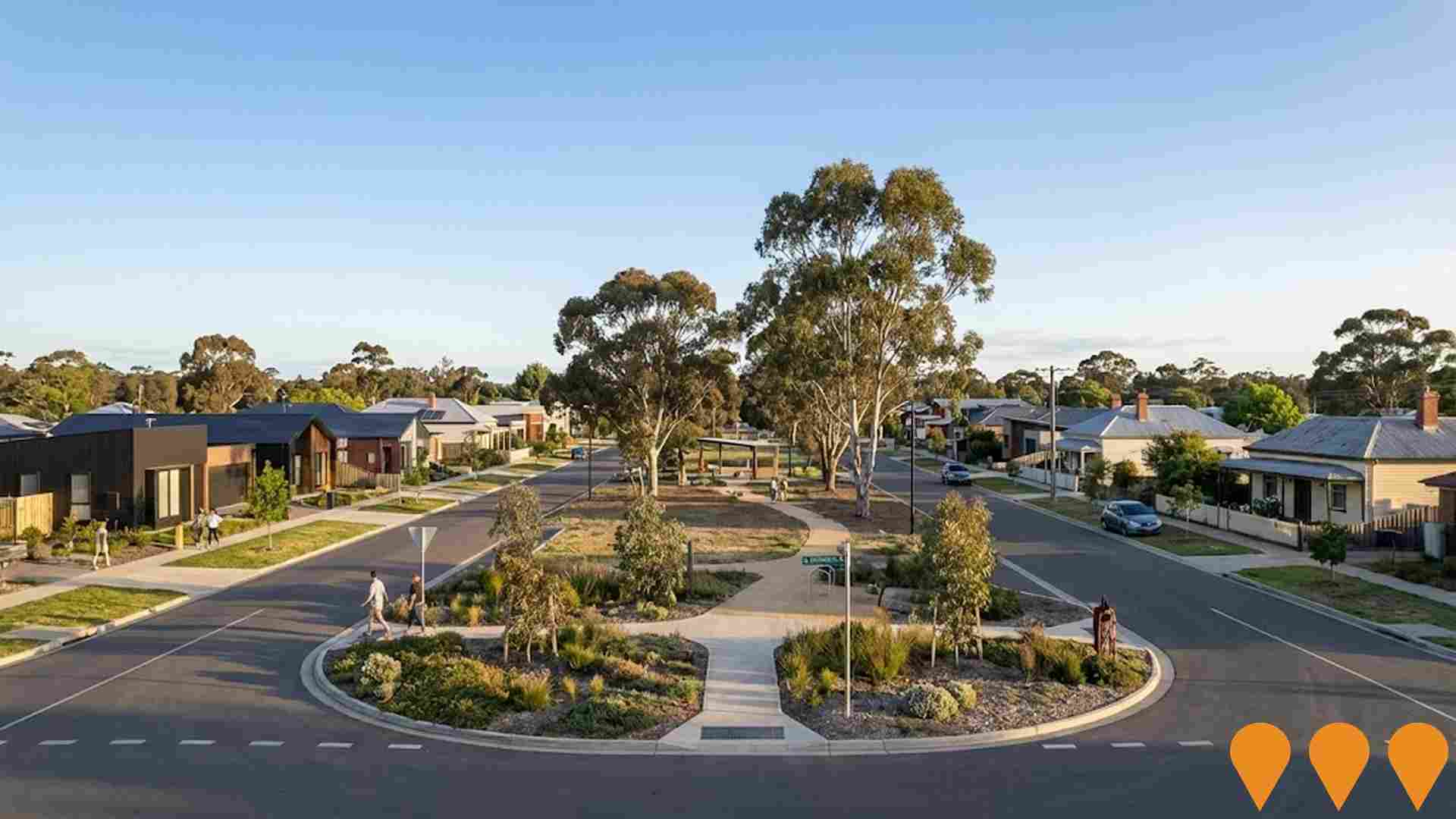
Learmonth Road Retail Hub
A premium large-format retail destination in Wendouree, designed for a diverse range of retailers including homemaker and lifestyle brands, providing a highly accessible and convenient shopping experience with abundant on-site parking and excellent visibility along Learmonth Road.
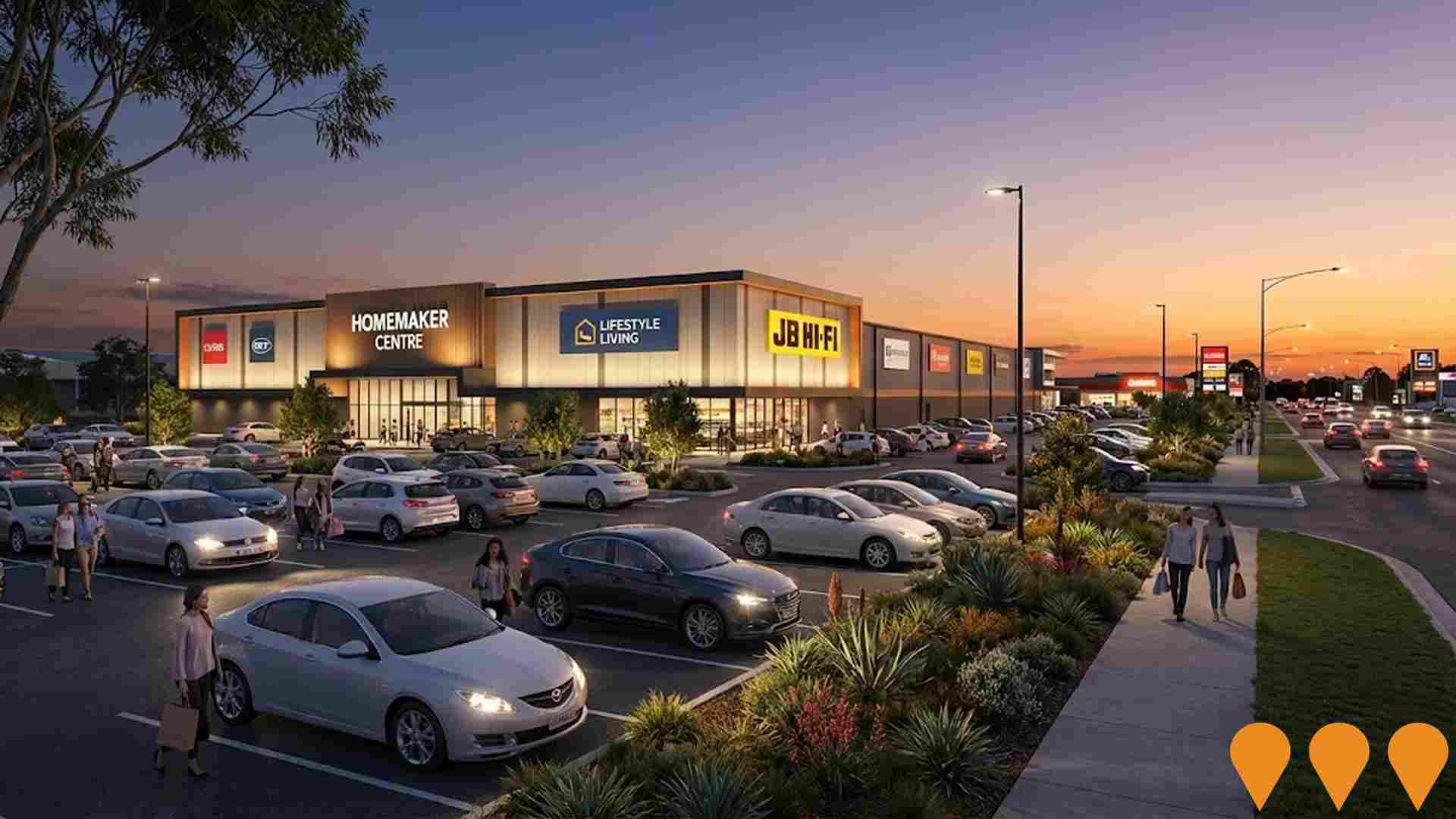
Western Victoria Aviation Precinct Ballarat
Multi-stage aviation infrastructure upgrade at Ballarat Airport. Stage 1 runway extension (1,300m to 1,800m) completed March 2024. Stage 2 involves reconstruction and strengthening of the existing 1,250m runway section to accommodate large turboprop and regional jet aircraft. Terminal upgrade project underway to create aeromedical patient transfer and emergency services facility. Projects will enable commercial freight operations, enhanced emergency services capability including large aerial firefighting tankers, and potential future interstate passenger services for Western Victoria region.
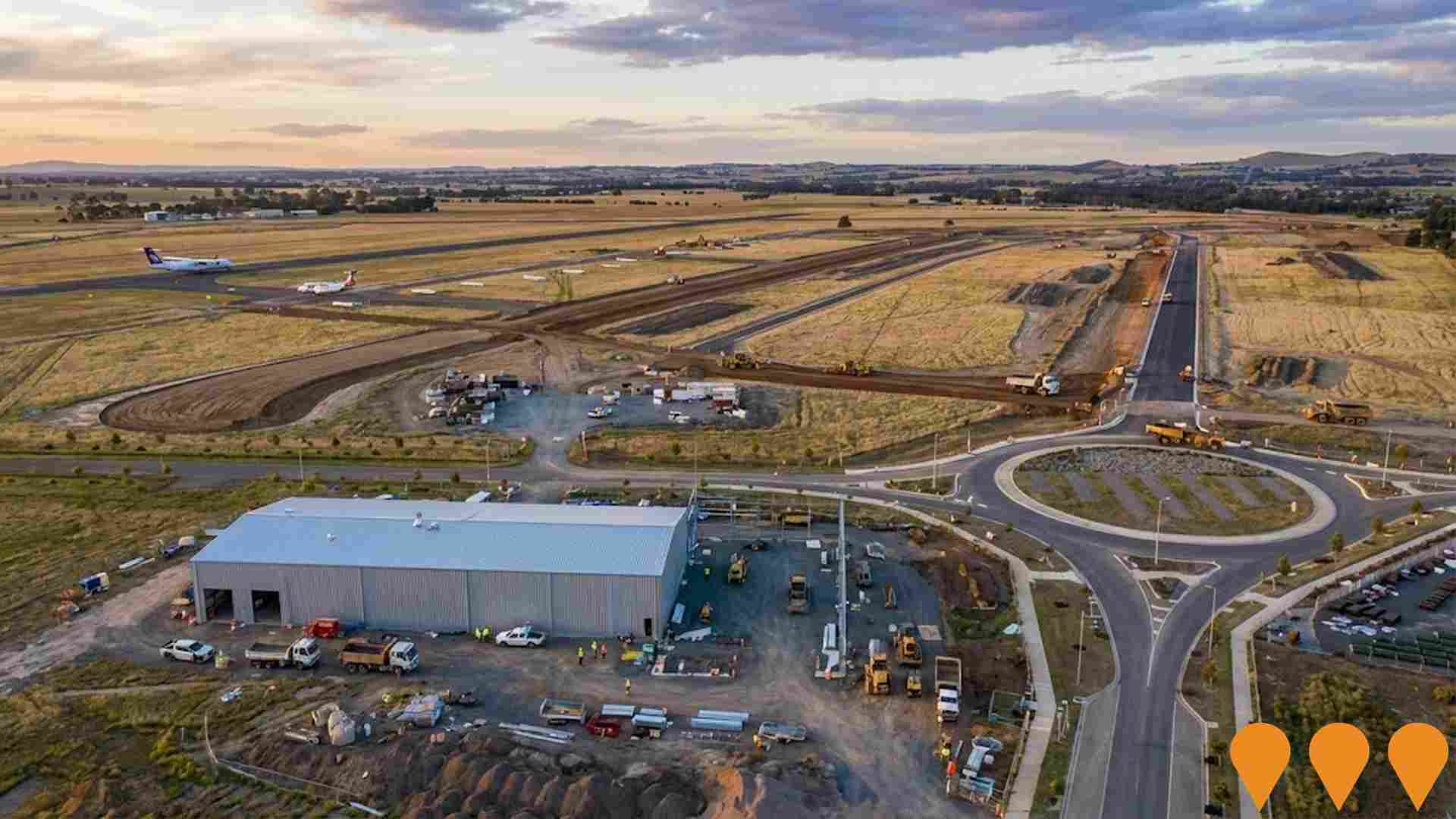
Wendouree Library and Learning Centre
A transformational 2,700 square metre double-storey library and learning centre at Weeramar Park, Wendouree, serving over 40,000 residents across Wendouree, Ballarat North, Invermay, Miners Rest and surrounding areas. The facility will replace the existing library at Stockland Wendouree and include comprehensive library services, City of Ballarat customer service point, Visitor Information Centre, Parent Place services, maker space, study and activity areas, relaxation spaces, a cafe with free WiFi, and support for lifelong learning, health, wellbeing and community connection. Haskell Architects and Porter Architects were appointed in June 2025 as lead designers, with final designs expected by mid-2026. This Tier One Advocacy Priority Project is seeking federal and state government funding partnerships.
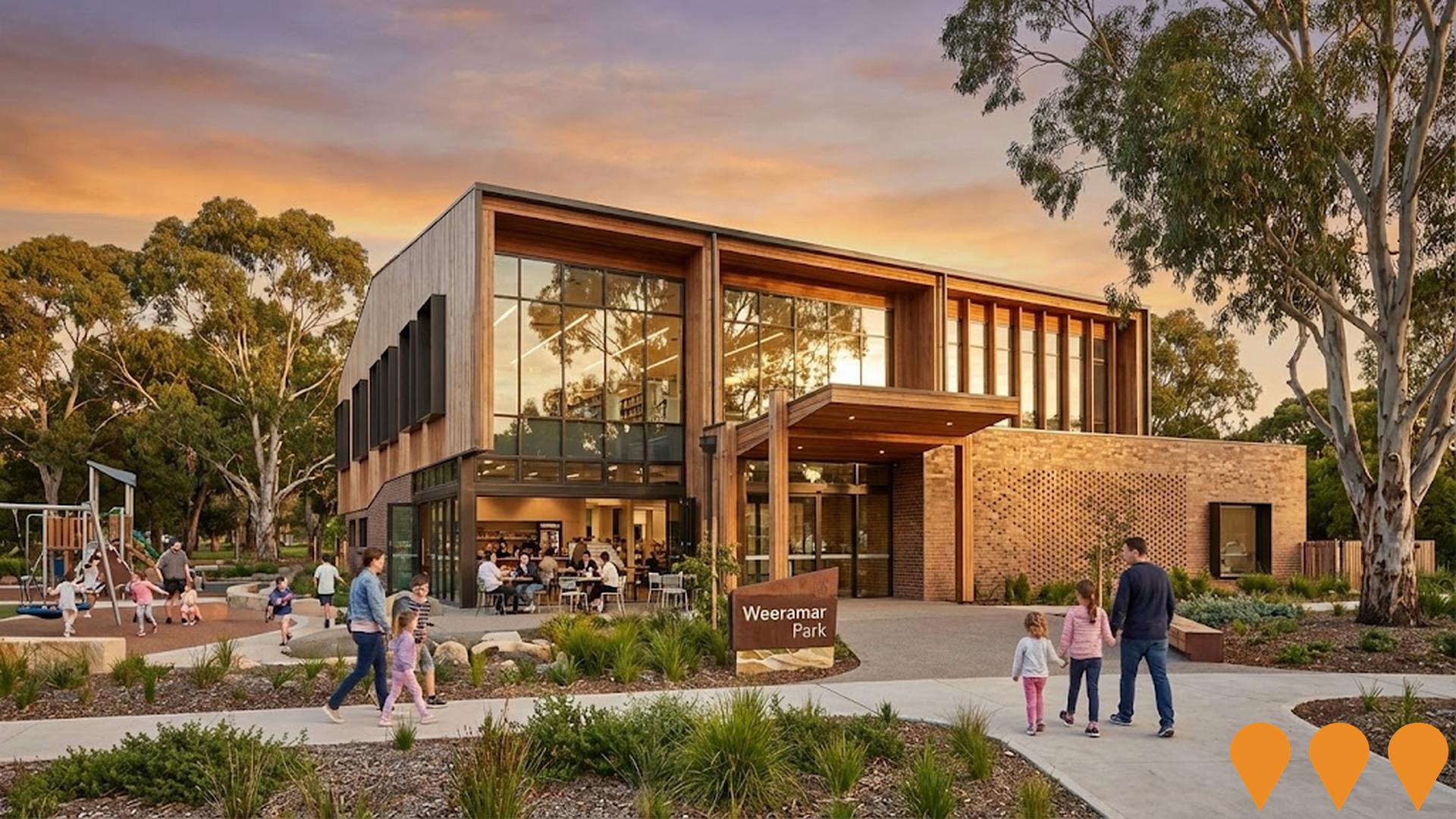
Western Renewables Link
Proposed 190km overhead 500kV double circuit high-voltage electricity transmission line from Bulgana in western Victoria to Sydenham in Melbourne's north-west. The project is currently in the EES public exhibition process (30 June to 25 August 2025).
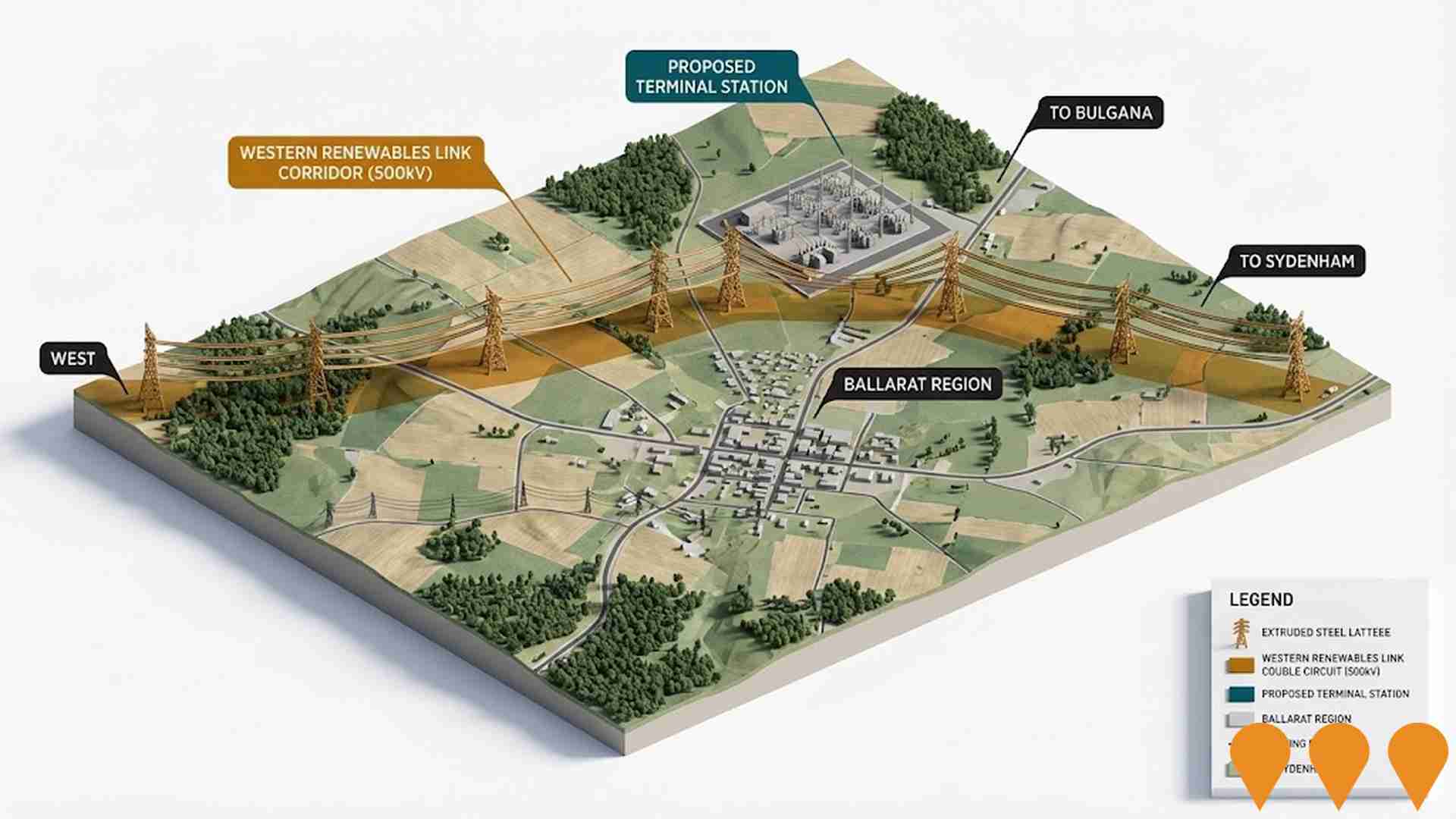
Miners Rest Primary School Redevelopment
Expansion and upgrade of the primary school, including 10 new classrooms, a new entry and administration area, arts and music rooms, food tech facilities, a kitchen garden, landscaped open play areas, and a competition-standard gymnasium and synthetic grass football oval. The project also involved acquiring extra land to enlarge the site from 1.5 hectares to 5.2 hectares to accommodate future growth. The redevelopment was completed in 2021.

Employment
AreaSearch analysis indicates Creswick - Clunes maintains employment conditions that align with national benchmarks
Creswick-Clunes has a skilled workforce with diverse sector representation. Its unemployment rate was 3.5% as of June 2025.
This rate is 0.7 percentage points lower than the Rest of Vic.'s rate of 4.2%. Employment in the area grew by 7.6% over the past year, compared to a decrease of 0.9% in Rest of Vic. The workforce participation rate was 53.0%, below Rest of Vic.'s 57.4%. Leading industries include health care & social assistance, agriculture, forestry & fishing, and construction.
Agriculture, forestry & fishing is particularly specialized with an employment share 1.5 times the regional level. Meanwhile, accommodation & food has limited presence at 5.0% compared to region's 6.9%. Employment opportunities may be limited locally as Census working population vs resident population indicates. Between June 2024 and June 2025, employment levels increased by 7.6%, labour force by 6.8%, reducing unemployment by 0.7 percentage points. In contrast, Rest of Vic.'s employment fell by 0.9%, labour force contracted by 0.4%, and unemployment rose by 0.4 percentage points. Jobs and Skills Australia's national employment forecasts from May 2025 suggest Creswick-Clunes' employment could grow by approximately 6.0% over five years and 12.8% over ten years, based on industry-specific projections.
Frequently Asked Questions - Employment
Income
Income figures position the area below 75% of locations analysed nationally by AreaSearch
Creswick-Clunes's median income among taxpayers was $45,547 in financial year 2022. The average income stood at $57,009 during the same period. These figures are below those of Rest of Vic., which had median and average incomes of $48,741 and $60,693 respectively. Based on a Wage Price Index growth of 12.16% since financial year 2022, estimated current median and average incomes for Creswick-Clunes are approximately $51,086 and $63,941 as of September 2025. According to census data, household, family, and personal incomes in Creswick-Clunes fall between the 15th and 16th percentiles nationally. The income bracket of $1,500 - 2,999 dominates with 29.5% of residents (2,390 people), consistent with broader regional trends showing 30.3% in the same category. Housing costs are modest, with 88.1% of income retained, but total disposable income ranks at just the 21st percentile nationally.
Frequently Asked Questions - Income
Housing
Creswick - Clunes is characterized by a predominantly suburban housing profile, with above-average rates of outright home ownership
Dwelling structure in Creswick-Clunes, as per the latest Census, comprised 94.7% houses and 5.3% other dwellings (semi-detached, apartments, 'other' dwellings). Non-Metro Vic., meanwhile, had 96.1% houses and 3.9% other dwellings. Home ownership in Creswick-Clunes was 48.5%, with the rest either mortgaged (37.1%) or rented (14.3%). The median monthly mortgage repayment was $1,300, below Non-Metro Vic.'s average of $1,538 and Australia's figure of $1,863. Median weekly rent in Creswick-Clunes was $250, compared to Non-Metro Vic.'s $300 and the national figure of $375.
Frequently Asked Questions - Housing
Household Composition
Creswick - Clunes features high concentrations of lone person households, with a lower-than-average median household size
Family households constitute 67.2 percent of all households, including 23.9 percent couples with children, 33.2 percent couples without children, and 9.4 percent single parent families. Non-family households account for the remaining 32.8 percent, with lone person households at 30.7 percent and group households comprising 2.1 percent of the total. The median household size is 2.3 people, which is smaller than the Rest of Vic. average of 2.4.
Frequently Asked Questions - Households
Local Schools & Education
Educational attainment in Creswick - Clunes aligns closely with national averages, showing typical qualification patterns and performance metrics
The area's university qualification rate is 21.4%, significantly lower than Victoria's average of 33.4%. Bachelor degrees are the most common, at 13.3%, followed by postgraduate qualifications (4.7%) and graduate diplomas (3.4%). Vocational credentials are prominent, with 39.9% of residents aged 15+ holding them, including advanced diplomas (11.8%) and certificates (28.1%). Educational participation is high, with 26.4% of residents currently enrolled in formal education.
This includes 10.1% in primary, 7.9% in secondary, and 2.8% in tertiary education. There are six schools operating within Creswick-Clunes, educating approximately 551 students, with typical Australian school conditions (ICSEA: 997) and balanced educational opportunities. All six schools focus on primary education, with secondary options available nearby.
Frequently Asked Questions - Education
Schools Detail
Nearby Services & Amenities
Transport
Transport servicing is low compared to other areas nationally based on assessment of service frequency, route connectivity and accessibility
Creswick-Clunes has 58 active public transport stops, offering a mix of train and bus services. These stops are served by 18 different routes, facilitating 401 weekly passenger trips in total. Transport accessibility is limited, with residents on average situated 722 meters from the nearest stop.
Service frequency averages 57 trips per day across all routes, resulting in approximately 6 weekly trips per individual stop.
Frequently Asked Questions - Transport
Transport Stops Detail
Health
Health performance in Creswick - Clunes is well below average with prevalence of common health conditions notable across both younger and older age cohorts
Creswick-Clunes faces significant health challenges, with common conditions prevalent across both younger and older age groups. Private health cover is low, at approximately 48% (around 3,913 people), compared to 51.4% in Rest of Vic., and the national average of 55.3%. The most frequent medical conditions are arthritis (11.1%) and mental health issues (9.8%), while 59.9% of residents report no medical ailments, compared to 63.5% in Rest of Vic..
The area has a higher proportion of seniors aged 65 and over, at 26.2% (2,121 people), than Rest of Vic.'s 24.2%. Health outcomes among seniors present some challenges but perform better than the general population in health metrics.
Frequently Asked Questions - Health
Cultural Diversity
Creswick - Clunes is considerably less culturally diverse than average when assessed alongside AreaSearch's national rankings for language and cultural background related metrics
Creswick-Clunes had a cultural diversity index below the average, with 90.2% of its population being Australian citizens, born in Australia (89.1%), and speaking English at home exclusively (96.8%). Christianity was the predominant religion, accounting for 45.5% of the population. The most notable overrepresentation was observed in the 'Other' category, comprising 0.8% compared to 0.6% across the rest of Victoria.
In terms of ancestry, the top three groups were English (31.7%), Australian (29.6%), and Irish (11.1%). There were notable divergences in the representation of certain ethnic groups: Scottish at 10.3% compared to 9.9%, Dutch at 2.4% compared to 2.0%, and Maltese at 0.6% compared to 1.3%.
Frequently Asked Questions - Diversity
Age
Creswick - Clunes hosts an older demographic, ranking in the top quartile nationwide
The median age in Creswick-Clunes is 49, which exceeds Rest of Vic's figure of 43 and is above Australia's median age of 38. The 55-64 cohort is notably over-represented locally at 15.7%, while the 25-34 age group is under-represented at 7.8%. Between 2021 and present, the 35 to 44 age group has increased from 10.6% to 11.4% of the population. Conversely, the 5 to 14 cohort has decreased from 11.4% to 10.6%. By 2041, demographic projections show significant shifts in Creswick-Clunes's age structure. The 25-34 age group is projected to grow by 234 people (37%), from 635 to 870. Meanwhile, population declines are projected for the 5 to 14 and 65 to 74 cohorts.


